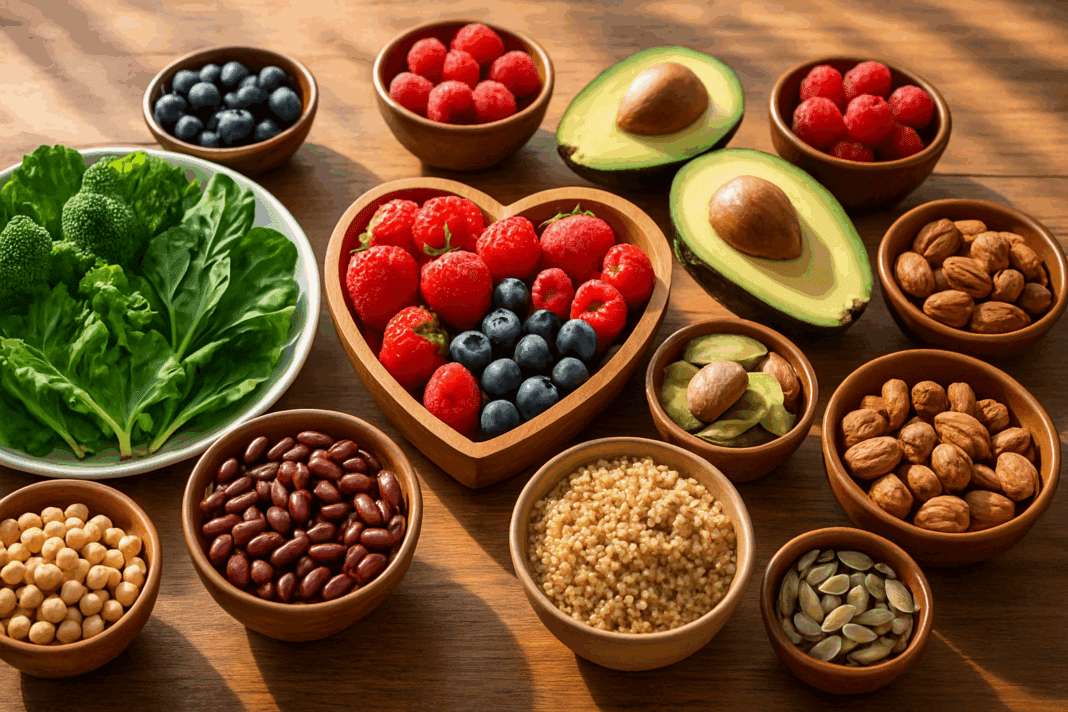Atherosclerosis, a progressive condition characterized by the buildup of plaque in the arteries, is one of the leading contributors to cardiovascular disease and heart attacks. While genetics and lifestyle factors certainly play a role, diet remains one of the most powerful tools we have to prevent, manage, and even begin reversing this condition. As endurance athletes, fitness enthusiasts, or simply individuals seeking better cardiovascular health, understanding the role of nutrition in arterial healing and performance is critical. This article explores the best diet for atherosclerosis, including foods that support heart recovery and endurance, as well as calcification foods to avoid that may hinder progress. Drawing on expert guidance, evidence-based nutrition science, and holistic perspectives, we’ll uncover practical strategies for building a diet that restores vitality and safeguards your cardiovascular system.
You may also like: Smart Nutrition Choices for a Healthier Lifestyle: What to Know About Whole Grain Rice and Whole Wheat Rice
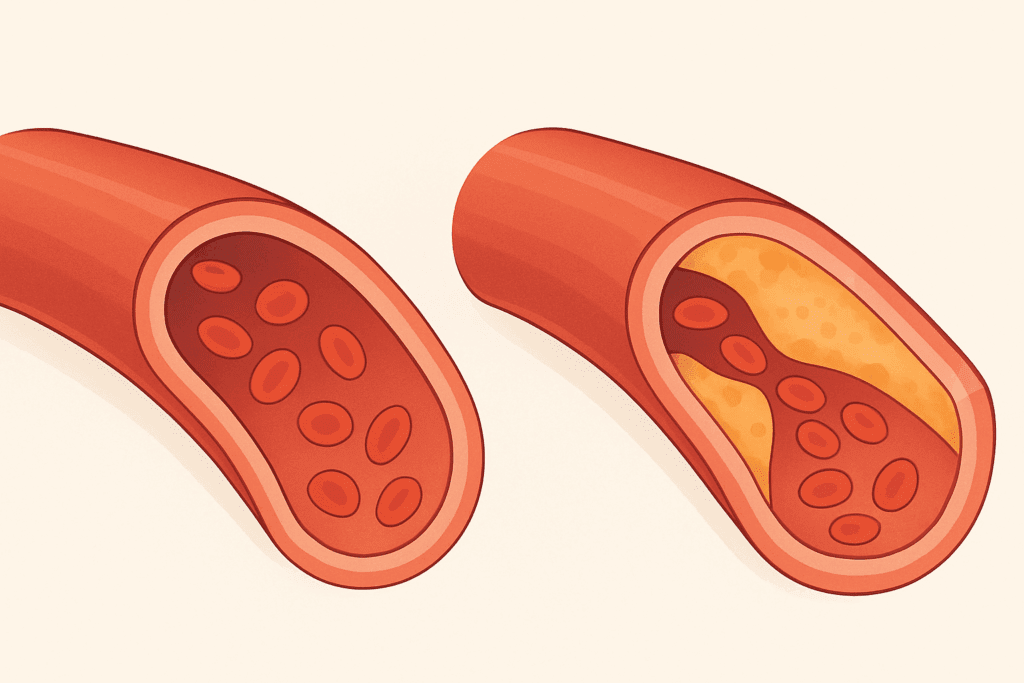
Understanding Atherosclerosis and Its Impact on Heart Health
Atherosclerosis doesn’t develop overnight; rather, it evolves silently over years, narrowing arteries and restricting blood flow to critical areas of the body, including the heart, brain, and limbs. Often, its presence is only recognized after a heart attack or stroke has occurred. However, even after such an event, dietary choices can significantly influence recovery and long-term outcomes. A heart diet after heart attack needs to be rich in anti-inflammatory, antioxidant-rich foods that protect and repair the inner lining of the arteries. These dietary changes are not just preventive—they are therapeutic.
In athletes or individuals engaged in endurance and stamina training, the implications of atherosclerosis are particularly concerning. Blood flow efficiency is key for oxygen delivery, muscle recovery, and cardiovascular performance. A clogged artery reduces the capacity of the body to perform at optimal levels, even if the symptoms remain unnoticed at rest. Therefore, understanding how atherosclerosis foods to avoid and foods that support vascular repair intersect with physical training is crucial.

The Role of Diet in Reversing Atherosclerosis and Supporting Recovery
The idea that diet alone can reverse atherosclerosis has been both supported and debated in medical circles. However, compelling studies, including those by Dr. Dean Ornish and other cardiovascular researchers, show that a carefully structured reversing atherosclerosis diet—low in saturated fat and animal products, and high in fiber, plant compounds, and antioxidants—can reduce plaque buildup and improve arterial function. This dietary shift is not merely about cholesterol reduction but about transforming the internal environment of the arteries.
A healthy diet after heart attack should prioritize whole, minimally processed plant-based foods. These foods contain natural compounds that reduce oxidative stress, lower blood pressure, and improve lipid profiles. Fiber-rich vegetables, legumes, fruits, whole grains, and omega-3-rich seeds form the core of an effective atherosclerosis diet. Reducing or eliminating dietary cholesterol and trans fats is critical, as these substances directly contribute to arterial plaque.
Additionally, when considering a good diet after a heart attack for performance enhancement, the focus extends beyond heart protection. The right foods also enhance endurance, energy stability, and tissue repair. Complex carbohydrates support sustained energy, while plant proteins from lentils, tofu, and nuts aid in muscle maintenance and metabolic recovery.
Key Components of the Best Diet for Atherosclerosis
An optimal diet for clogged arteries must be both nutrient-dense and strategically anti-inflammatory. Leafy greens such as spinach and kale are high in nitrates, which convert to nitric oxide and help dilate blood vessels. Berries, rich in anthocyanins and polyphenols, reduce oxidative damage to vascular cells. Beans and legumes provide both fiber and plant-based protein, which help reduce LDL cholesterol levels, one of the known contributors to arterial plaque.
Whole grains such as oats, quinoa, and brown rice help regulate blood sugar and provide essential nutrients like magnesium, which supports arterial flexibility. Fatty fish like salmon and sardines, although animal-derived, contain high levels of omega-3 fatty acids that have been shown to lower triglyceride levels and reduce arterial inflammation. However, for those adhering strictly to a plant-based approach, flaxseeds, chia seeds, and walnuts are excellent alternatives.
Avocados, olives, and extra virgin olive oil provide healthy monounsaturated fats that support lipid balance and improve HDL (good) cholesterol. Green tea, rich in catechins, may help reduce vascular inflammation and support endothelial function. These foods form the foundation of a diet to reverse atherosclerosis that is both practical and effective for long-term cardiovascular health.

Foods That May Worsen Arterial Calcification and Heart Disease
Not all foods contribute equally to heart health, and understanding what foods to avoid when you have calcified arteries is equally important. Processed meats, such as bacon, sausages, and deli cuts, are high in sodium, nitrates, and saturated fats—compounds known to accelerate arterial plaque and calcification. Refined sugars and sugary beverages spike blood glucose levels, which over time can lead to endothelial damage and insulin resistance, both risk factors for atherosclerosis.
Trans fats, often found in baked goods, margarine, and fast food, are among the most harmful substances for cardiovascular health. Even small amounts can significantly raise LDL cholesterol and lower HDL cholesterol. Full-fat dairy products, while debated in nutritional circles, are typically best avoided or minimized in a heart diet after heart attack due to their saturated fat content. Similarly, fried foods, especially when cooked in industrial seed oils, contribute to systemic inflammation.
High sodium intake from ultra-processed snacks, frozen meals, and canned goods without sodium reduction can lead to hypertension, which worsens arterial damage. Alcohol, when consumed in excess, can impair liver function, disrupt lipid metabolism, and contribute to high blood pressure—all of which exacerbate heart disease progression. A comprehensive atherosclerosis diet requires not only the inclusion of healing foods but the deliberate removal of dietary offenders that contribute to plaque buildup.

Balancing Nutritional Needs for Endurance and Cardiovascular Repair
While cardiovascular recovery is paramount, athletes and active individuals must balance those needs with fuel for performance. The best diet for atherosclerosis in active populations must meet energy requirements without compromising arterial health. Carbohydrates should come from complex, whole-food sources such as sweet potatoes, lentils, and buckwheat, which provide steady energy without spiking insulin levels.
Protein intake is essential, particularly in the post-recovery phase following a heart event or for those engaged in resistance training. Plant-based sources like tempeh, legumes, and quinoa offer all essential amino acids without the drawbacks of red meat. Smoothies with plant protein powder, greens, and berries can be a nutrient-dense recovery meal that supports vascular health and endurance.
Fats should come predominantly from unprocessed sources such as seeds, nuts, and avocados. These fats are not only heart-protective but also essential for hormone production and recovery processes. Hydration with low-sodium broths, herbal teas, and water infused with citrus and herbs can also support vascular health by enhancing circulation and electrolyte balance.
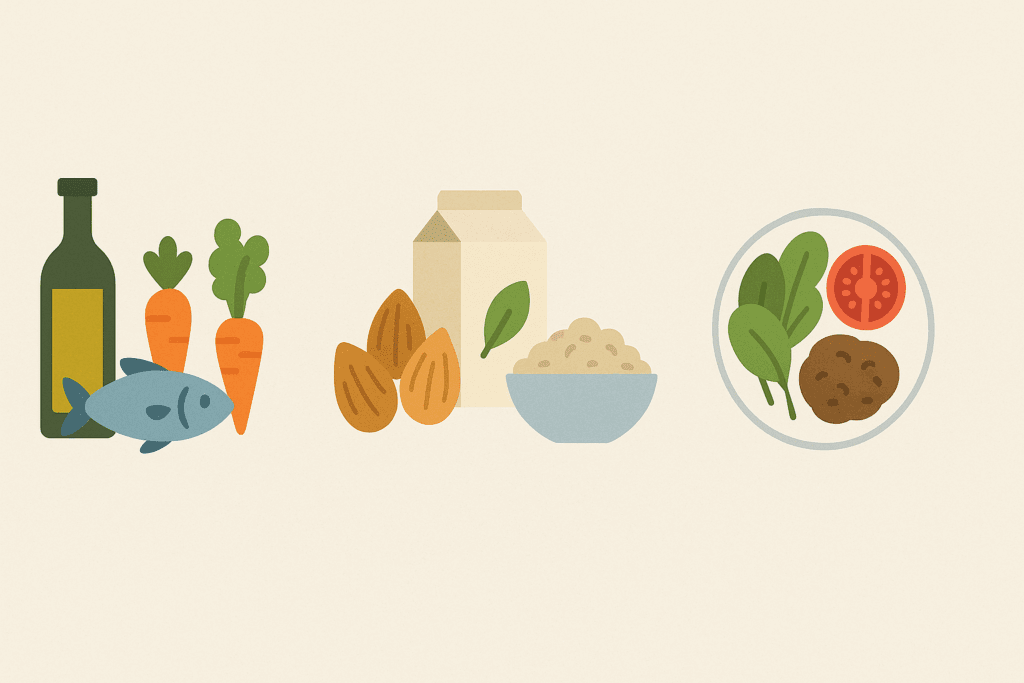
The Science Behind Dietary Patterns for Reversing Atherosclerosis
Research continues to evolve, but several dietary patterns stand out in their ability to reduce cardiovascular risk and support artery repair. The Mediterranean diet, for instance, emphasizes whole grains, vegetables, legumes, fish, and olive oil—components that align with an effective diet for clogged arteries. This pattern has been associated with reduced mortality, improved lipid profiles, and lower markers of inflammation.
The Portfolio Diet, developed by researchers in Canada, combines cholesterol-lowering foods such as nuts, soluble fiber, soy protein, and plant sterols, and has been clinically shown to reduce LDL cholesterol by over 30% when followed strictly. Similarly, the Ornish Diet—entirely plant-based and ultra-low in fat—has demonstrated the potential to halt or even reverse coronary artery disease, particularly when paired with lifestyle modifications such as stress reduction and physical activity.
These diets are not fads. They are evidence-based frameworks for what a good diet after a heart attack might look like, especially for individuals recovering from cardiac events and aiming to return to physical activity. They not only reduce risk but promote regeneration and resilience in the cardiovascular system.
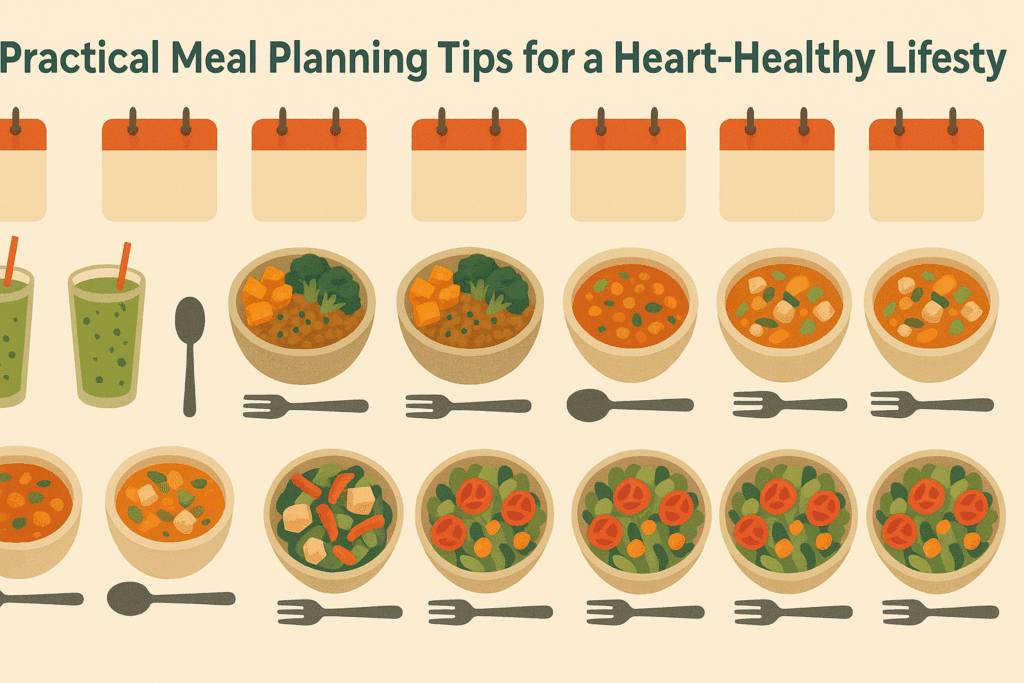
Practical Meal Planning Tips for a Heart-Healthy Lifestyle
Shifting to a heart-supportive diet doesn’t mean sacrificing flavor or satisfaction. A healthy diet after a heart attack can be both nourishing and enjoyable with proper planning. Begin with simple swaps—replace white rice with quinoa, butter with avocado spread, and sugary snacks with fresh fruit and nuts. Prepare meals in advance to reduce reliance on processed convenience foods, which often contain the very ingredients that accelerate atherosclerosis.
Batch-cooked soups with lentils and kale, stir-fries with tofu and colorful vegetables, and grain bowls topped with tahini dressing and hemp seeds can form the base of an energizing, heart-healthy weekly menu. Experimenting with global cuisines—like Mediterranean, Asian, or Latin American plant-forward dishes—can keep meals exciting and culturally diverse.
When grocery shopping, prioritize the perimeter of the store where fresh produce, whole grains, and minimally processed items are found. Reading ingredient labels and choosing products with no added sugars or sodium can significantly reduce the intake of calcification foods to avoid. Importantly, include loved ones or household members in your meal planning process, as shared dietary goals increase long-term adherence and success.
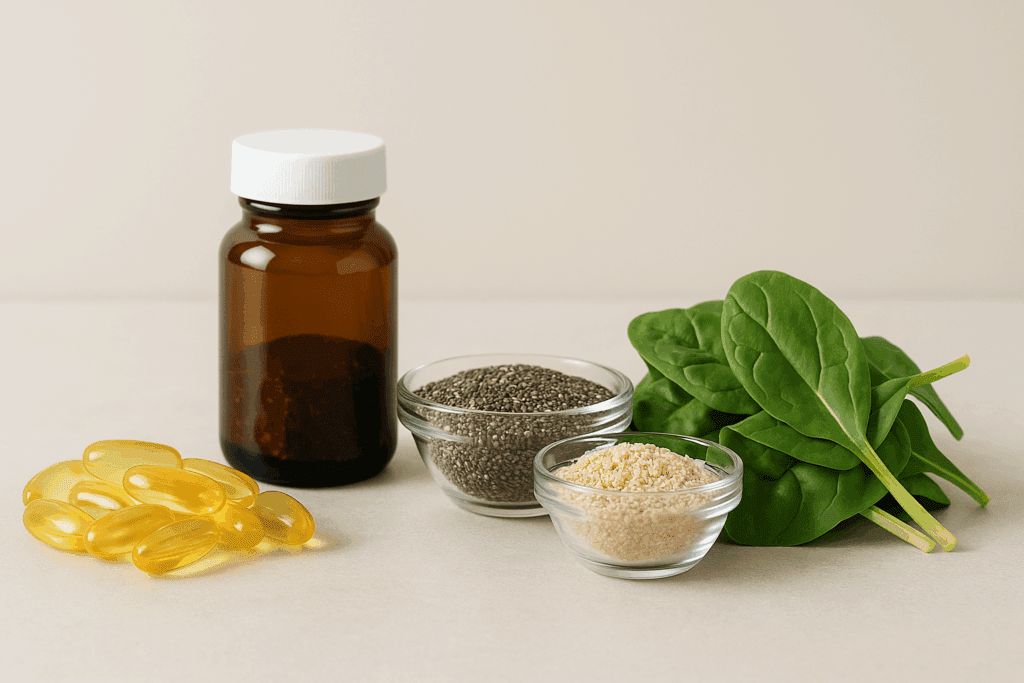
Rethinking Supplements and Functional Foods for Heart Health
While whole foods should be the cornerstone of any atherosclerosis diet, certain supplements and functional foods can provide additional support. Omega-3 fatty acid supplements derived from algae are an excellent plant-based option for those who do not consume fish. Coenzyme Q10 (CoQ10), a nutrient involved in cellular energy production, may help improve endothelial function, particularly in statin users whose levels are often depleted.
Magnesium and potassium supplementation can assist with blood pressure regulation, especially in individuals who struggle to meet daily requirements through food alone. Fiber supplements such as psyllium husk can aid in cholesterol management, though they should not replace a fiber-rich diet. Functional foods such as oat bran, fermented vegetables, and fortified plant milks can also add specific heart-supportive nutrients like beta-glucans, probiotics, and B vitamins.
Always consult with a healthcare provider before beginning any supplement regimen, especially after a cardiac event. Individual needs vary, and over-supplementation can pose risks. Nonetheless, when used strategically and in tandem with dietary change, these interventions can enhance the benefits of a diet to reverse atherosclerosis.
A Holistic Approach to Cardiovascular Recovery and Endurance
Nutrition is a cornerstone, but it does not exist in isolation. Stress management, sleep quality, physical activity, and emotional well-being all influence cardiovascular health. For those engaged in endurance and stamina training, integrating yoga, meditation, and mindfulness practices can reduce cortisol levels and support vascular relaxation. Sleep hygiene plays a critical role in inflammation modulation and tissue repair.
Social connection, purpose, and a sense of community have also been linked to improved cardiovascular outcomes. Participating in heart recovery groups, fitness communities, or simply sharing meals with family can foster the emotional resilience needed to make sustainable dietary changes. These elements are often overlooked but form the fabric of long-term healing and performance.
Frequently Asked Questions: The Best Diet for Atherosclerosis and Heart Recovery
1. Can exercise alone improve atherosclerosis, or is a diet to reverse atherosclerosis essential?
Exercise is undeniably vital for cardiovascular health, but without nutritional intervention, its impact on reversing atherosclerosis remains limited. Physical activity helps enhance circulation, increase HDL cholesterol, and reduce inflammation, all of which are beneficial. However, a diet to reverse atherosclerosis is essential because food directly influences arterial plaque formation and the body’s inflammatory response. Nutrients from whole, plant-based foods support endothelial healing and plaque stabilization, while certain foods can actively reduce LDL cholesterol. Therefore, combining movement with the best diet for atherosclerosis creates a powerful synergy for reversing disease progression.
2. What are the long-term benefits of following a heart diet after heart attack?
A heart diet after heart attack provides more than just immediate protection against recurrence—it also supports long-term cardiac remodeling, lowers medication dependence, and improves quality of life. Individuals who adopt a healthy diet after heart attack often experience increased energy levels, better mental clarity, and enhanced exercise tolerance. Over the years, adherence to such a diet helps prevent complications like arrhythmias, heart failure, and peripheral artery disease. It also reinforces sustainable habits that support mental health and emotional resilience, especially when paired with stress-reduction practices. By maintaining this diet, the individual not only avoids atherosclerosis foods to avoid but also fosters long-term cardiovascular resilience.
3. Are there regional diets that naturally align with a reversing atherosclerosis diet?
Yes, several traditional dietary patterns from around the world align closely with a reversing atherosclerosis diet. The Okinawan diet, for instance, emphasizes sweet potatoes, sea vegetables, tofu, and bitter greens—all naturally anti-inflammatory and nutrient-dense. The Nordic diet also features heavily in atherosclerosis research due to its inclusion of rye, root vegetables, and cold-water fish. These regional diets mirror the principles of the best diet for atherosclerosis by minimizing processed foods and maximizing phytochemicals and fiber. They also reflect cultural wisdom in combining seasonal, local ingredients, which can be adapted globally for heart health. Incorporating these traditions may offer unique and flavorful ways to personalize a diet for clogged arteries.
4. What are the social challenges of adopting a good diet after heart attack, and how can they be addressed?
One of the most overlooked aspects of transitioning to a good diet after heart attack is the social impact. Meals are often shared experiences, and suddenly eating differently from friends or family can lead to feelings of isolation or pressure to conform. Strategies to overcome this include sharing your recovery journey openly, preparing inclusive meals that everyone can enjoy, and joining heart health support groups. Practicing assertive communication helps loved ones understand the importance of avoiding calcification foods to avoid and embracing more nutrient-rich alternatives. By reframing the diet not as a restriction but as a healing practice, individuals can find stronger social support and long-term success.
5. Are plant-based diets always necessary for atherosclerosis recovery, or can animal products be included?
A plant-based approach forms the cornerstone of an effective atherosclerosis diet, but not all versions require complete elimination of animal products. Lean, minimally processed animal proteins such as wild-caught salmon or pasture-raised eggs may be incorporated occasionally, especially for those focused on endurance and muscle recovery. The key lies in moderation, sourcing, and prioritizing plant-based diversity while eliminating atherosclerosis foods to avoid. Dairy, red meat, and processed meats, however, are best avoided due to their saturated fat and inflammatory compound content. Ultimately, the best diet for atherosclerosis is the one that is both evidence-based and personally sustainable over time.
6. How does sleep quality interact with a healthy diet after heart attack?
Emerging research highlights the bidirectional relationship between nutrition and sleep in cardiovascular recovery. A healthy diet after heart attack rich in magnesium, tryptophan, and omega-3 fatty acids can improve sleep latency and quality, aiding physical and neurological repair. Conversely, poor sleep elevates cortisol and disrupts glucose metabolism, which can counteract the benefits of a heart-healthy diet. Individuals following a diet for clogged arteries should prioritize sleep hygiene—this includes limiting caffeine, creating a consistent bedtime routine, and ensuring evening meals are light and low in refined carbs. When diet and sleep are aligned, recovery accelerates and overall endurance improves.
7. What foods to avoid when you have calcified arteries that people commonly overlook?
Some foods that contribute to arterial calcification fly under the radar due to their health halos or subtle labeling. For example, some granolas marketed as “natural” may contain hidden sugars and oxidized oils that undermine cardiovascular repair. Energy bars and protein snacks often contain soy protein isolate and emulsifiers, which can promote inflammation. Even canned soups labeled as low-fat may contain excessive sodium, which can worsen vascular stiffness. Knowing what foods to avoid when you have calcified arteries involves careful label reading and an awareness of food processing. Avoiding these items is a key part of maintaining a good diet after heart attack and preventing further calcification.
8. What role do emotional and psychological factors play in sustaining a reversing atherosclerosis diet?
Long-term adherence to a reversing atherosclerosis diet is not just about willpower—it requires emotional regulation, stress resilience, and identity transformation. After a heart event, individuals often face anxiety or depression, which can interfere with appetite, motivation, and consistency. Creating routines, journaling meals and feelings, or working with a health psychologist can help build sustainable habits. Social reinforcement, such as participating in a plant-based cooking class or a recovery group, further strengthens behavior change. Understanding this psychological dimension is essential to maintaining a healthy diet after heart attack and ensuring lifelong cardiovascular protection.
9. Can intermittent fasting support the best diet for atherosclerosis?
Intermittent fasting may be compatible with the best diet for atherosclerosis when practiced carefully. Fasting periods help lower insulin levels and support autophagy, which may reduce inflammation and improve lipid profiles. However, it’s essential to break fasts with nutrient-dense meals aligned with a reversing atherosclerosis diet rather than high-fat or processed foods. This pattern may not be suitable for all heart patients, especially those on medication or with blood sugar regulation issues. Consultation with a physician or dietitian ensures that intermittent fasting complements rather than complicates a diet for clogged arteries.
10. How can someone measure progress on an atherosclerosis diet beyond cholesterol numbers?
While LDL cholesterol is a primary marker, it’s not the only indicator of progress on an atherosclerosis diet. Other metrics include blood pressure stability, arterial stiffness as measured by pulse wave velocity, and markers like C-reactive protein (CRP) for inflammation. Improvements in exercise capacity, resting heart rate, and recovery time are also signs that a heart diet after heart attack is working. Some patients may track their coronary artery calcium score (CAC) over time, though changes here are slow. Monitoring quality of life, emotional well-being, and energy levels offers a more holistic picture of dietary impact beyond lab results.
Conclusion: Embracing the Best Diet for Atherosclerosis and Heart Recovery
Navigating life after a heart event or living with atherosclerosis demands more than short-term fixes—it calls for a lifelong commitment to nourishing the body in ways that support both recovery and performance. The best diet for atherosclerosis is not a restrictive regimen but a pathway to vitality, stamina, and cardiovascular renewal. It emphasizes whole, plant-centered eating, minimizes inflammatory and calcifying foods, and is supported by a growing body of scientific evidence.
From leafy greens and legumes to omega-3-rich seeds and heart-protective grains, the components of a good diet after a heart attack offer more than just protection—they offer a roadmap back to endurance, energy, and confidence. Avoiding atherosclerosis foods to avoid, while embracing nutrient-rich, healing foods, is a profound act of self-care that reverberates through every system of the body. And for those pursuing performance, the benefits extend far beyond the arteries—they uplift the entire being. In this journey, food is more than fuel—it is medicine, restoration, and a catalyst for life well-lived.
Was this article helpful? Don’t let it stop with you. Share it right now with someone who needs to see it—whether it’s a friend, a colleague, or your whole network. And if staying ahead on this topic matters to you, subscribe to this publication for the most up-to-date information. You’ll get the latest insights delivered straight to you—no searching, no missing out.
Further Reading:
Heart-healthy diet: 8 steps to prevent heart disease
Top 10 dietary strategies for atherosclerotic cardiovascular risk reduction

